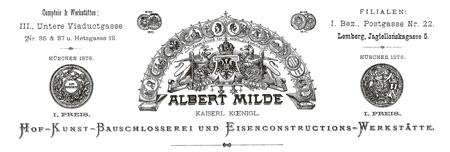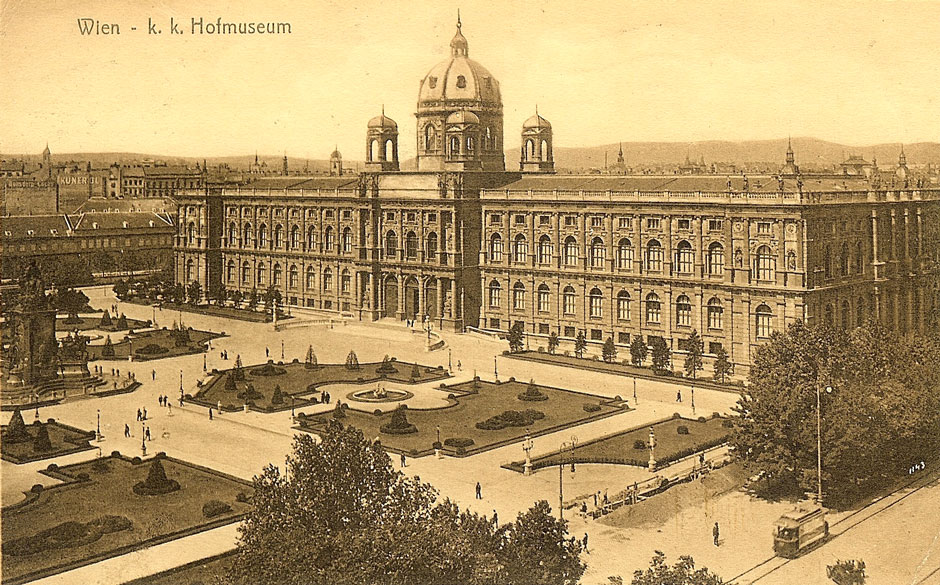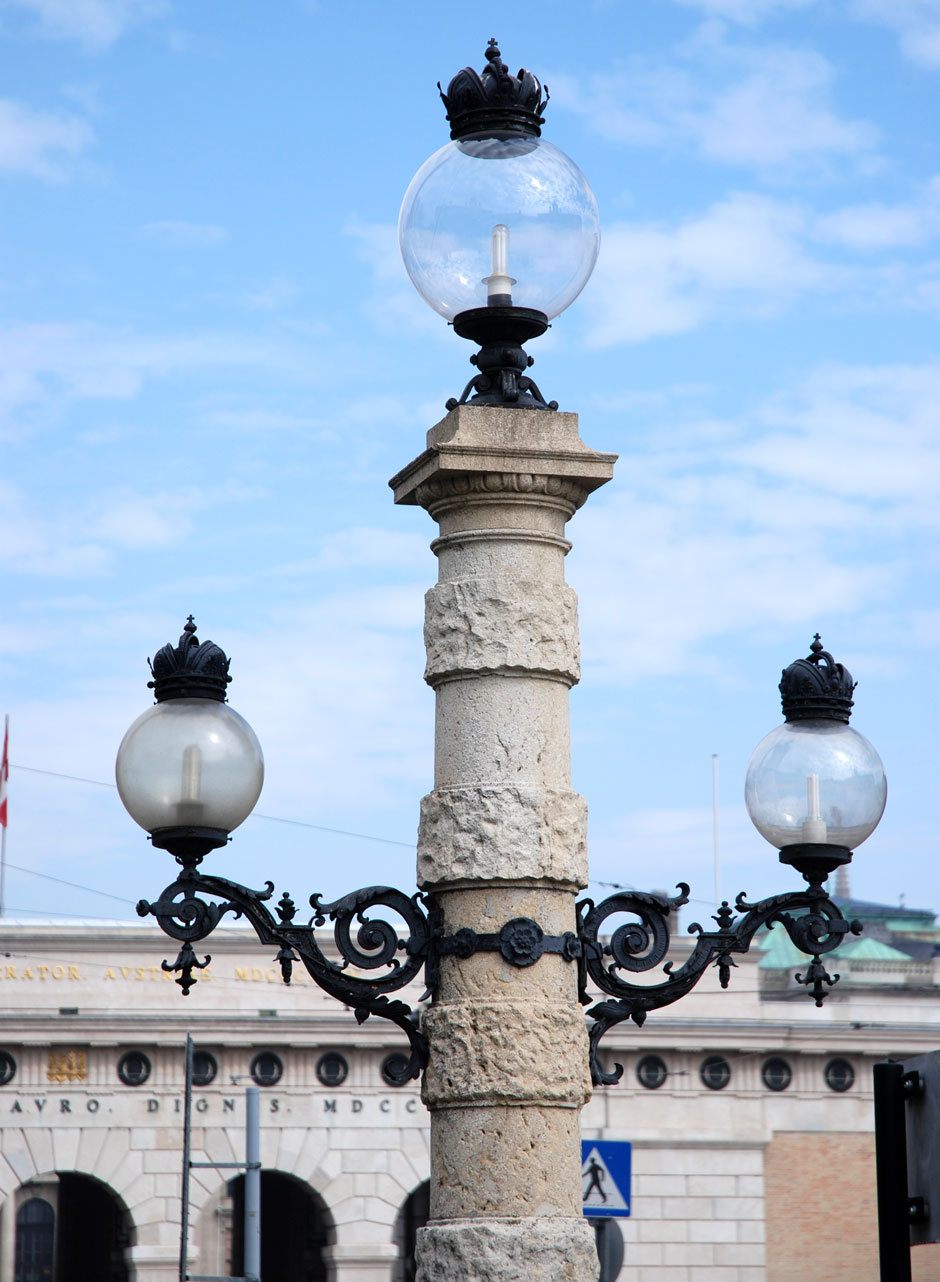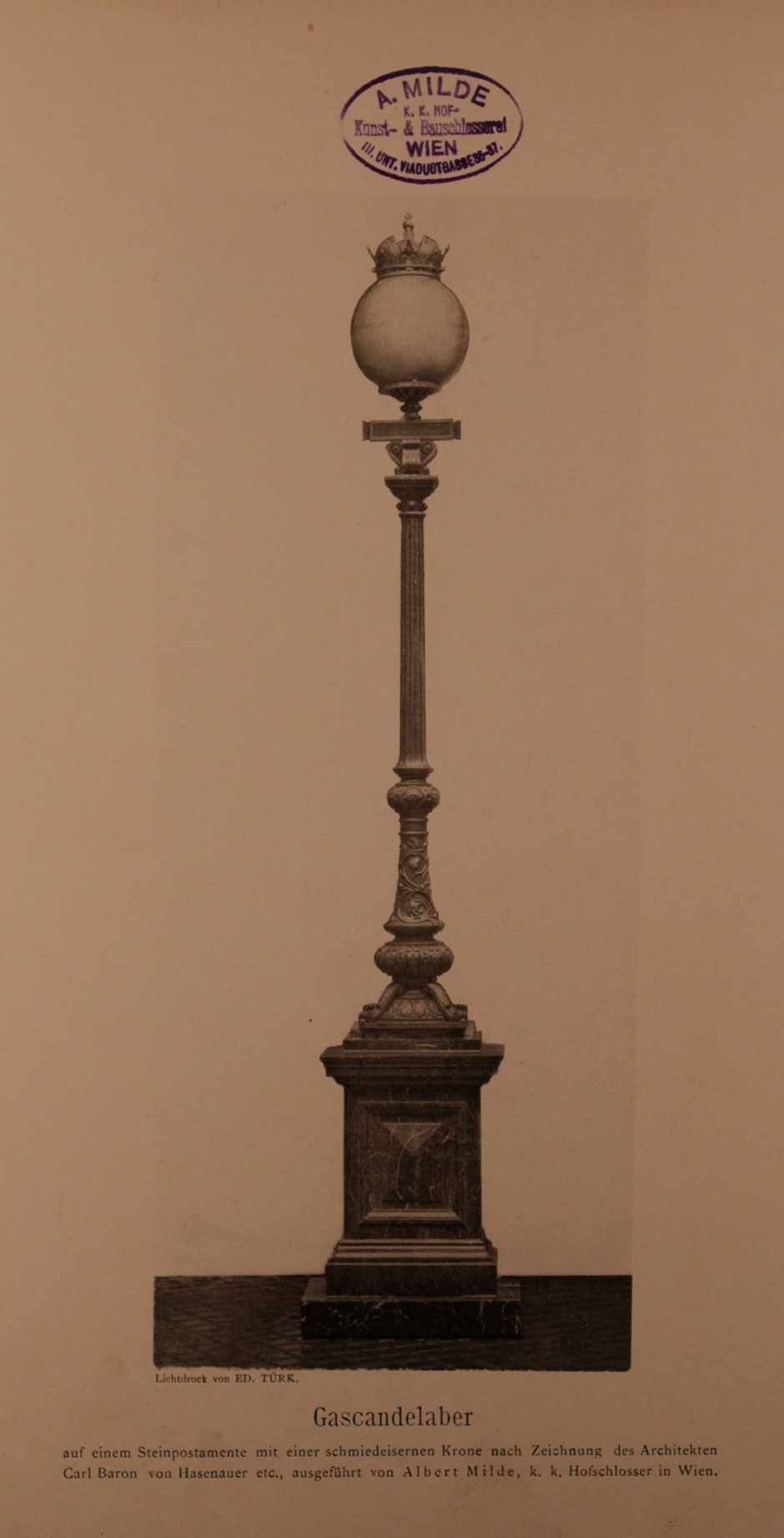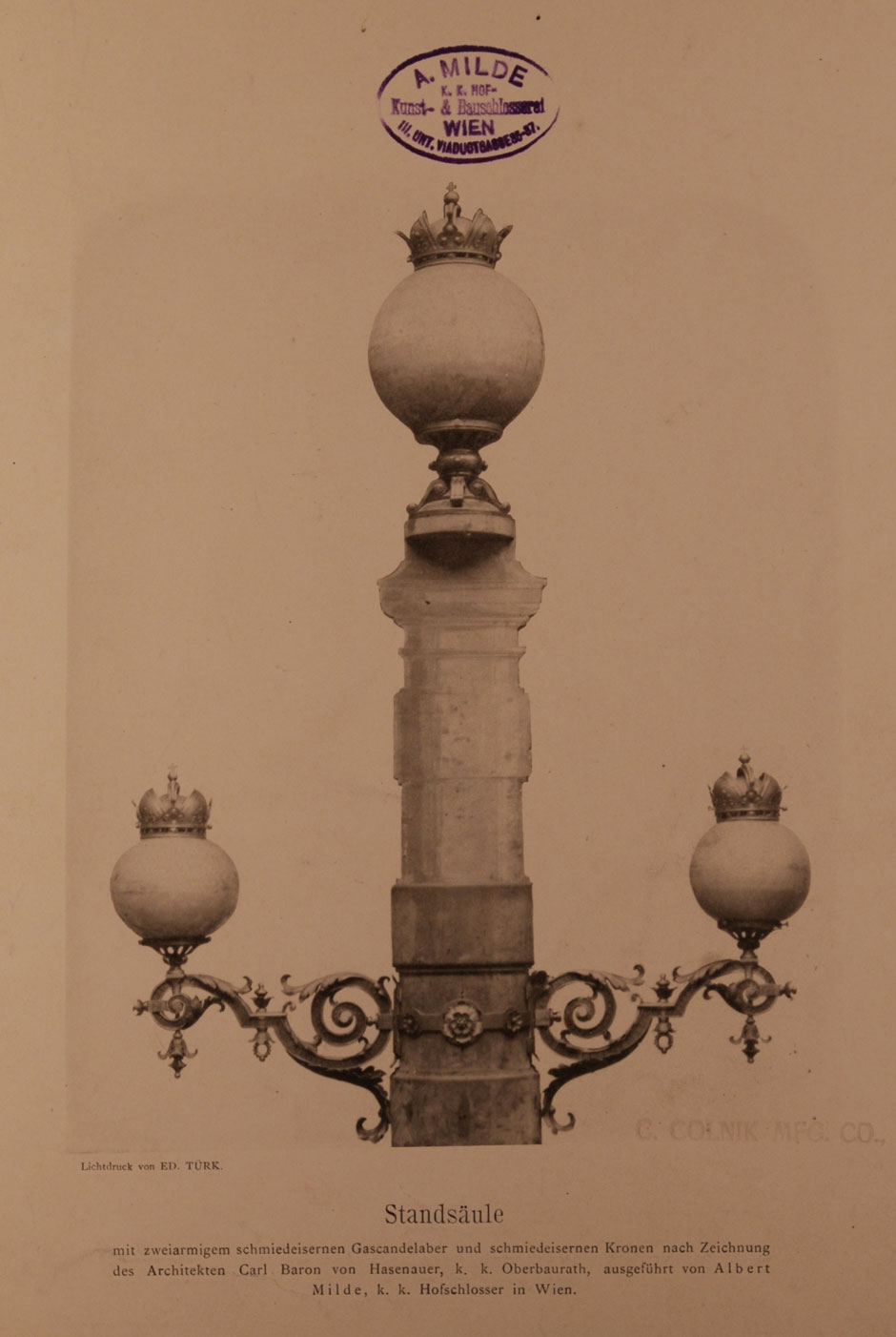| Built in: | 1888 |
| Electrified: | 1903/04 |
| Constructor: | Urban Development Funds |
| The project of: | Karl Hasenauer |
| Smith works: | Albert Milde & Co. |
| Building form: | Stone Candelabra with three or five Lanterns |
| Total height: | 3,80 m (without base). |
Building history:
The creation of a square between two museums was approved on 26.9.1884 by the town council. Simultaneously, the construction of the fence’s lattice and the lightning structures was also approved. The planning was made without any doubts by Karl Hasenauer, as Gottfried Semper in 1879 was already dead; the implementation the smith and cast iron works was assigned to the company of Albert Milde. In 1888, for an opening of the Empress Maria Theresia’s memorial the lightning tools were produced. Their electrification occurred in the years 1903/04.
Building description:
On Maria Theresia Square there are total 110 candelabras on stone platforms, part of which are integrated into the garden’s fences and museums’ buildings. 22 candelabras are made in stone and stand on important places in the area of park entrances and corners, 88 candelabras are from cast iron.
The stone candelabras consist of upwards rejuvenated columns, base and capital. Smooth and column surface are regularly changing each other, so the horizontal structure of the column is the same as one on the museum building’s facade. In upper half of a column there are two or four tendril-shaped arms from wrought iron, which are connected to stone by metal ring, and hold spherical lanterns. Above capital there is one more glass sphere, which holds similar to other a crown.
The other 88 candelabras consist from a cast iron column with a base and capital; above it - is the only one lantern, completing the general shape of stone candelabra. On the base plate is engraved the name "A. Milde - k. k. Hof-Schlosser" ("A. Milde - k. k. artistic wrought iron smith").
Technical description:
The stone candelabras are made from special weather resistant alga lime from Oslip; all metal parts are made from wrought iron. The cast iron candelabras are made from one piece of metal; only the covings on the base were poured individually and screwed on. The candelabra itself is attached to the stone base by a visible bolted connection.
Maria Theresia Memorial:
The Maria Theresia Memorial has turned out to be crucial for a creation of a square between two museums. It was as a link between two buildings, optically played the role of a bridge across Ringstraße to the castle Burg and with regard to the shape corresponded to the structure of the domed buildings. Zumbusch has already considered this in his model, and Hasenauer, who made the memorial, implemented it in the reality.
